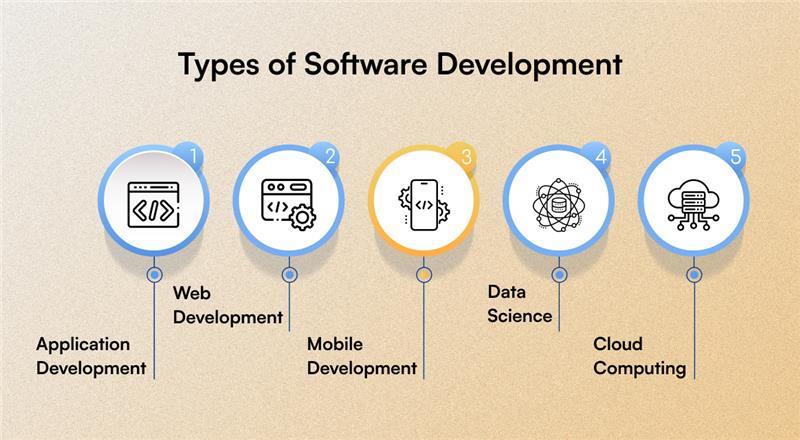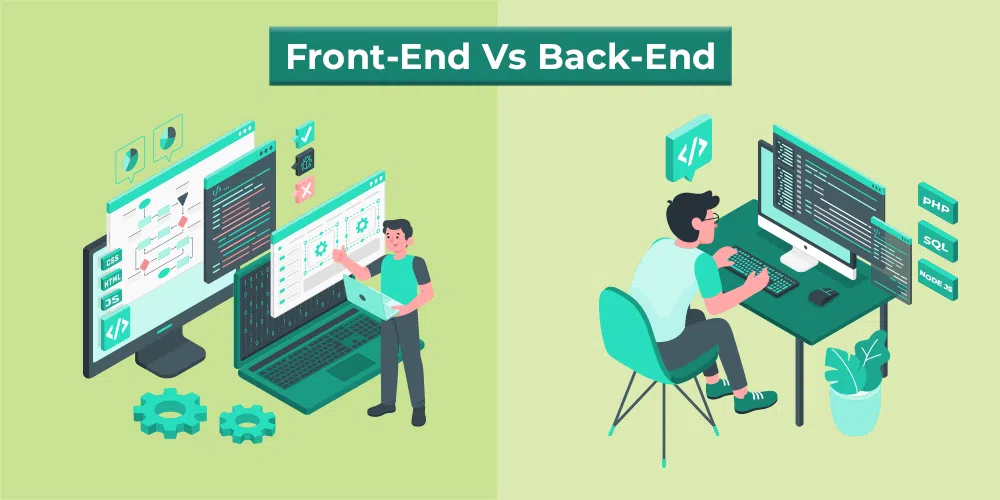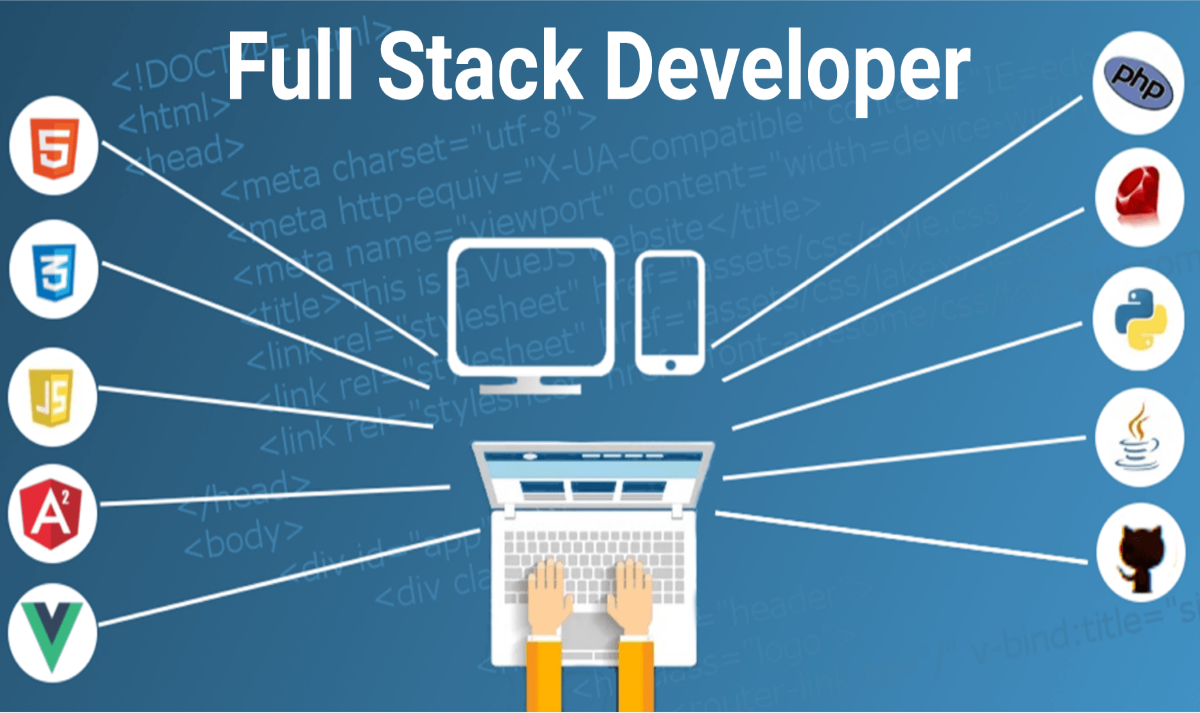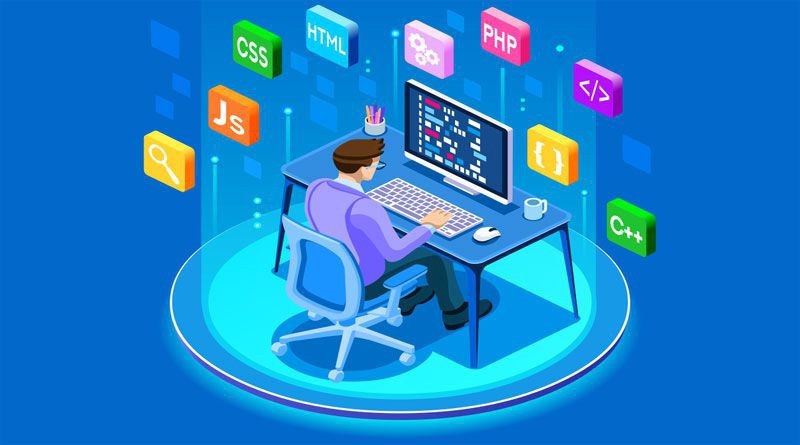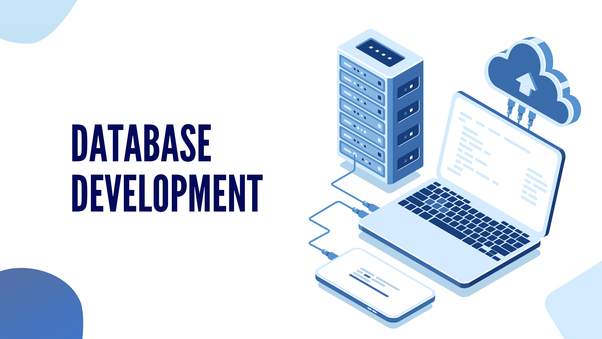Imagine a world devoid of the seamless navigation of your favorite app, the captivating stories in your go-to game, or the instant connection with loved ones across the globe. All these digital marvels would be absent without the magic of types of software development, the invisible language that breathes life into technology. This isn’t just about coding; it’s about shaping how we interact with the digital world in profound ways. Delve deeper and discover the many exciting realms within types of software development, from the visually stunning interfaces you see to the powerful engines that run them behind the scenes. Get ready to explore the invisible forces that build the future, the very tools that are constantly shaping the digital landscape we navigate every day.
Types of Software Development
1. Front-End vs. Back-End Development
Imagine scrolling through a beautifully designed website, its layout clean and intuitive, buttons responding with smooth animations, and graphics loading seamlessly. This captivating user experience is just one example of the many exciting specialties within the world of types of software development. Front-end developers, for instance, are the architects of the visual interface (UI), the part of the software you directly interact with. Their tools of choice are the building blocks of the web: HTML, CSS, and JavaScript.
- HTML (HyperText Markup Language): The foundation, creating the structure and content of webpages.
- CSS (Cascading Style Sheets): The stylist, defining the visual style of the page, like colors, fonts, and layouts.
- JavaScript: The magician, adding interactivity and dynamic elements to the user interface, making buttons work, menus pop up, and animations come alive.
But the magic doesn’t happen in a vacuum. Behind the scenes, working tirelessly to ensure everything runs smoothly, are the back-end developers. They are the masterminds behind the server, the unseen engine that powers the software. While you may not directly interact with their code, it’s what makes everything tick:
- Databases: The back-end developer’s vault, storing all the website’s data, from product information in an online store to your login credentials.
- Server-side programming languages: Their secret language, languages like Java, Python, or PHP, power the logic and functionality that happens behind the scenes. They handle tasks like processing user requests, interacting with databases, and sending information back to the front-end to be displayed.
In essence, front-end developers are the artists who craft the user experience, while back-end developers are the engineers who build the underlying infrastructure. They work together seamlessly, the visible and invisible forces that bring software to life.
2. Full-Stack Developers
While front-end and back-end developers focus on specific areas, the world of types of software development also offers a path for the multi-talented. Enter the full-stack developer, the Swiss Army knife of the coding world. Unlike their specialized counterparts, full-stack developers possess a comprehensive skillset that spans the entire software development lifecycle. They can seamlessly switch between designing an app’s user interface and crafting the powerful code that makes it tick.
The Full-Stack Arsenal:
- Front-End Mastery: They wield the same tools as front-end developers – HTML, CSS, and JavaScript – to create visually appealing and interactive user interfaces. They can craft intuitive layouts, ensure smooth animations, and implement features that make the user experience enjoyable.
- Back-End Brawn: But their expertise doesn’t stop there. Full-stack developers are equally comfortable working on the back-end. They understand the intricacies of database management, confidently navigating systems like SQL and NoSQL databases to store and retrieve data efficiently.
- Server-Side Savvy: They are fluent in server-side programming languages like Java, Python, or PHP. This allows them to build the core logic of the application, handling tasks like user authentication, data processing, and communication between the front-end and the database.
- API Architects: Full-stack developers understand the importance of APIs (Application Programming Interfaces). They can design and build APIs, essentially creating messengers that allow different parts of the software or even external applications to communicate and exchange data seamlessly.
The Benefits and the Burden:
This versatility makes full-stack developers highly sought-after, especially in startups and smaller teams where resources might be limited. They can wear many hats, tackling both front-end and back-end issues, streamlining the development process and potentially saving time and money.
However, the path to becoming a full-stack developer is demanding. It requires a constant learning curve, staying up-to-date with the ever-evolving landscape of technologies on both the front-end and back-end. It’s not for the faint of heart, but for those who thrive on challenges and relish the opportunity to master all aspects of software development, full-stack development offers a truly enriching and rewarding career path.
3. Exploring Specialized Software Development
The world of types of software development extends far beyond the websites and apps we interact with daily. It’s like a hidden language that permeates every facet of our lives, powering devices, analyzing data, and even driving innovation in scientific fields. Let’s delve deeper and explore some of these specialized software development domains, from mobile apps to cutting-edge embedded systems.
1. Mobile App Development:
Our pockets are now homes to powerful mini-computers, and the software that brings them to life is the domain of mobile app developers. They can create native apps, built specifically for a particular operating system like iOS or Android, or utilize hybrid app frameworks that allow for cross-platform development, reaching a wider audience. They need to understand the unique user experience considerations for mobile devices, focusing on touch interaction, efficient resource usage, and seamless integration with device features like cameras and GPS.
2. Desktop Application Development:
While web applications have gained significant traction, desktop software remains crucial for tasks requiring more processing power or offline functionality. Desktop developers use programming languages like C++, Java, or Python to build software specifically for operating systems like Windows, macOS, or Linux. They need to consider factors like user interface design tailored for desktop environments, efficient memory management, and seamless integration with the host operating system’s features.
3. Embedded Systems Development:
Look around you – from the smart thermostat controlling your home temperature to the sophisticated medical devices in hospitals, software plays a vital role in embedded systems. Embedded systems developers create software designed to run on specialized hardware with limited resources. They need to prioritize efficiency, ensuring the software operates flawlessly within the constraints of the embedded system. Programming languages like C and C++ are often used due to their low-level control and efficiency.
4. Game Development:
The video game industry is a booming entertainment sector, and the magic behind those captivating experiences comes from game developers. This specialized field requires expertise in various areas – creating compelling 3D graphics, crafting engaging gameplay mechanics, and integrating complex physics simulations. Game developers utilize a wide range of programming languages and specialized game engines to bring their visions to life.
5. Enterprise Software Development:
Large organizations rely on robust software solutions to manage their operations, from customer relationship management (CRM) to enterprise resource planning (ERP) systems. Enterprise software developers focus on building scalable and secure applications that can handle massive amounts of data and complex workflows. They need to understand business processes, data security best practices, and integration with existing IT infrastructure.
These are just a few examples of the diverse landscape of specialized software development. Each domain requires a unique skillset and in-depth knowledge of the target platform or industry. Whether you’re fascinated by creating immersive games, developing life-saving medical software, or building the future of smart homes, there’s a specialized software development path waiting to be explored.
4. Database Development
Within the vast landscape of types of software development, a hidden role keeps the digital world running smoothly: the database developer. In the heart of every software application lies a treasure trove of information – user data, product details, financial records. These database developers are the architects of the data storage systems that power our software, ensuring this information is managed efficiently and securely.
Building the Information Vaults:
Unlike software developers who craft the applications we interact with, database developers focus on the unseen infrastructure, the databases that store and manage all this critical information. They are responsible for:
- Database Design: Just like architects design buildings, database developers meticulously plan the structure of the database. They define tables, columns, and relationships between them, ensuring the data is organized efficiently and can be retrieved quickly.
- Data Modeling: They delve into the complexities of data models, choosing the most suitable approach – relational databases for structured data like customer information, or NoSQL databases for handling unstructured data like social media posts.
- Data Integrity: Database developers implement safeguards to ensure the accuracy and consistency of the data. They establish rules and constraints to prevent errors and maintain data integrity, which is crucial for reliable decision-making based on the information stored.
- Query Craftsmanship: Imagine needing to find a specific customer record or a particular product detail within a vast database. Database developers craft queries, essentially writing instructions that search and retrieve the desired data efficiently. SQL (Structured Query Language) is a common tool they use to communicate with relational databases.
- Performance Optimization: As the volume of data grows, ensuring the database performs optimally becomes paramount. Database developers implement techniques like indexing and data partitioning to streamline retrieval processes and ensure fast response times.
Beyond the Back-End:
While database development often falls under the back-end development umbrella, their work has a ripple effect across the entire software development lifecycle. They collaborate closely with front-end developers to ensure smooth data flow between the user interface and the database. Moreover, they also work with back-end developers to integrate the database seamlessly with the application’s logic and functionality.
Masters of Information Management:
Database developers are the custodians of the data kingdom. Their expertise is crucial for building secure and reliable information systems that power the software we rely on every day. As the amount of data we generate continues to grow exponentially, the demand for skilled database developers will only increase. So, if you have an analytical mind and a passion for organization, this specialized field offers a rewarding path in the ever-evolving world of software development.
5. Software Development for the Digital Age
The way we access software has undergone a dramatic shift, moving beyond physical installations. Enter cloud computing, a revolutionary concept in types of software development. This approach stores software applications and resources on remote servers accessed over the internet. Cloud computing has fundamentally changed the landscape of software development, demanding new skills and approaches for developers to keep pace.
Embracing the Cloud Frontier:
For traditional software developers, applications were deployed on physical servers located on-premise. Cloud computing throws a wrench into this model. Here’s how software development adapts for the cloud:
-
Scalability on Demand: Cloud platforms like Amazon Web Services (AWS), Microsoft Azure, and Google Cloud Platform (GCP) offer a game-changer: on-demand scalability. Cloud developers can easily scale resources (storage, processing power) up or down as needed, eliminating the need for expensive upfront investments in hardware. This flexibility allows applications to handle unexpected surges in traffic or data volume without performance hiccups.
-
Microservices Architecture: Traditional monolithic applications, while familiar, can be cumbersome to manage in the cloud. Cloud development often embraces a more modular approach: microservices architecture. Here, applications are broken down into smaller, independent services. This allows for faster development cycles, easier deployment, and simpler maintenance. Think of it like building with LEGOs – smaller, modular components that can be easily added, removed, or updated.
-
DevOps Integration: The cloud fosters a culture of collaboration, breaking down silos between developers (Dev) and operations (Ops) teams. Cloud developers can leverage DevOps principles to automate tasks like infrastructure provisioning, code deployment, and testing. This streamlines the development process significantly, allowing for faster and more frequent releases. Imagine a well-oiled machine where development and operations work in harmony.
-
Focus on Cloud-Native Technologies: Cloud developers utilize a different set of tools compared to traditional developers. Containerization technologies like Docker and Kubernetes become essential tools for packaging and deploying microservices efficiently across the cloud. Additionally, cloud APIs (Application Programming Interfaces) play a crucial role. These APIs act as messengers, allowing different services to communicate and exchange data seamlessly within the cloud environment. It’s like having a universal language for all the different parts of the software to talk to each other.
Benefits and Challenges:
Cloud development offers numerous advantages: increased scalability, reduced costs, and faster development cycles. However, it also presents challenges. Security concerns around data stored in the cloud require careful consideration. Additionally, cloud developers need to stay up-to-date with the ever-evolving landscape of cloud platforms and services.
The Future is in the Cloud:
Cloud computing is the future of software development. As businesses increasingly migrate to the cloud, the demand for skilled cloud developers will continue to soar. If you’re passionate about innovation and eager to embrace the latest technologies, then cloud development offers an exciting and dynamic career path.
Conclusion
Software development isn’t just about code; it’s about shaping the digital future. From the captivating games we play to the seamless apps we use daily, software development acts as the invisible language, breathing life into technology. Furthermore, think of it like building a city. Front-end developers are the architects, crafting the stunning skylines you see. But a city thrives on more than just aesthetics. In contrast, back-end developers are the engineers, laying the invisible foundation – the servers, databases, and logic that make everything work behind the scenes. Moreover, just like a city relies on a network of pipes and power lines, specialists like database developers and cloud architects ensure everything runs smoothly. This intricate collaboration, then, between various development specialties is what brings software to life.
ONextDigital empowers you to become a part of this transformative journey. Our Web Development, Mobile App Development, and UX/UI Design services provide the building blocks you need to craft innovative and user-centric software solutions. Whether you’re envisioning the next revolutionary game or a streamlined business app, we have the expertise to translate your vision into reality. Let’s code the future together, one line of code at a time. Together, we can build digital wonders that not only work flawlessly but also captivate and inspire. Contact us today.





